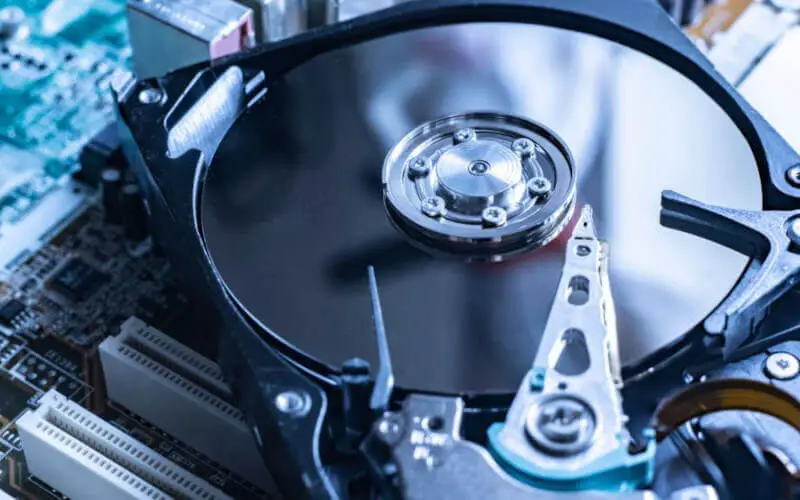You’ve likely heard of both SATA and SSD drives before, but do you know what each type means and its practical implications in terms of storage and performance?
In this article, I’ll take an in-depth look at the differences between these two hard drive types, let you know which one might be best for your needs, and explain why.
What is a SATA Drive?
SATA (Serial ATA) is an interface that connects computer components such as hard drives, optical drives, and cards to a computer’s motherboard. It was designed to replace the older and slower parallel ATA (PATA) interface.
SATA cables transfer data at up to 600 megabytes per second (MB/s), much faster than PATA’s 133 MB/s. SATA is also more reliable due to its improved signal integrity, leading to fewer errors in data transmission.
SATA has been around since 2003 and is still used today in most desktop computers. It provides scalability options with newer versions supporting higher transfer speeds.
Regarding hard drive form factor options for SATA connections, there are two: traditional HDDs (Hard Disk Drives) and SDDs (Solid State Drives). Both offer different benefits in terms of storage space and performance capabilities.
What is HDD?
HDDs are non-volatile storage devices that use spinning disks to store data on the magnetic surface. They tend to be less expensive than SDDs while providing larger capacity options – up to 16TB worth of storage space – but may be slower than SSDs due to their spinning disk technology.
As with any machine with moving parts, HDDs can also be more prone to physical damage if not properly handled or stored.
What is SSD?
Solid State Drives (SSDs) are the next-generation storage devices that use NAND flash memory chips to store data. They do not have any moving parts like a hard disk drive (HDD) has, which makes them more reliable, durable, and faster than HDDs.
SSDs function like a USB flash drive as they can read and write data much faster than traditional HDDs. Additionally, they consume less power and generate less noise, so they’re ideal for notebook computers.
Furthermore, they can also be used in desktop PCs and servers to store large amounts of data in a very short time with minimal impact on system performance.
Frequently Asked Questions
Is SATA or SSD Better for Gaming?
Regarding gaming performance, a Solid State Drive (SSD) offers more than an HDD. SSDs load games quicker, meaning you’re ready for that crucial moment in the game faster than ever before. They also have faster data transfer, making game loading times and saving progress a breeze.
Furthermore, when choosing the right SSD, read and write speeds are important factorst; the higher these numbers are, the better performance you’ll get out of the drive. If you’re interested in buying an SSD, read my guide on SanDisk vs Samsung SSD.
It’s also worth noting that some of the newer models on the market use a PCIe interface which is up to 4 times faster than SATA III drives.
While SSDs may cost more per gigabyte compared to HDDs, the improved performance should be more than enough reason for any avid gamer to make that all-important upgrade!
Does SSD Reduce Lag?
Every second counts when playing a video game. Lag, caused by long load times and slower IO speeds, can impede progress on the digital battleground, leading to a lower ranking in tournaments or an inability to complete objectives.
Many gamers employ solid-state drives (SSDs) as part of their gaming system setup. SSDs reduce latencies, allowing you to get into the game or beat your opponents quicker.
Conclusion
When deciding between an HDD or SSD drive for your specific needs, consider factors such as price per GB versus speed ratios and overall capacity requirements before making your purchase decision.
HDDs are your go-to option if you’re looking for a reliable, long-term solution that won’t break the bank—boasting larger capacity than SDDs at lower price points per gigabyte, though with slightly longer file transfers and boot times.
Conversely, if speed is paramount over monetary concerns, then an SSD should be considered – although they can become expensive when large capacity requirements come into play.






